The concept of the machine pistol is surprisingly nothing new.
Dating back to the days of the early 20th century, various firearms designers incorporated select-fire capabilities into the relatively small package of a handgun.
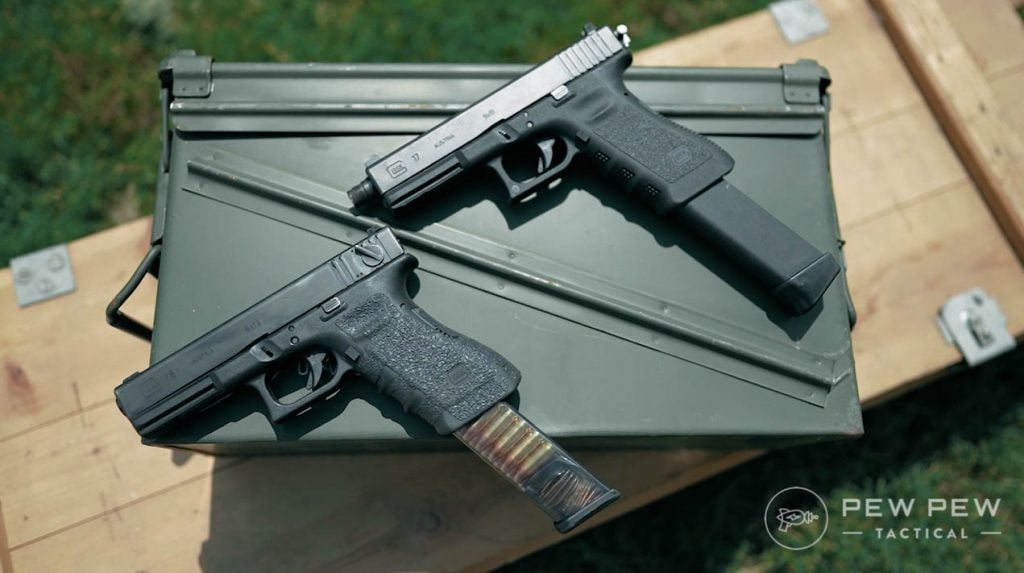
The U.S. experimented with a fully automatic 1911 with 30-round magazines — hilarious for a platform that routinely struggles to get through 7-round mags without jamming.
Germany’s Mauser C96 saw a few select-fire iterations that mostly cooked off rounds from overheating after sustained fire.
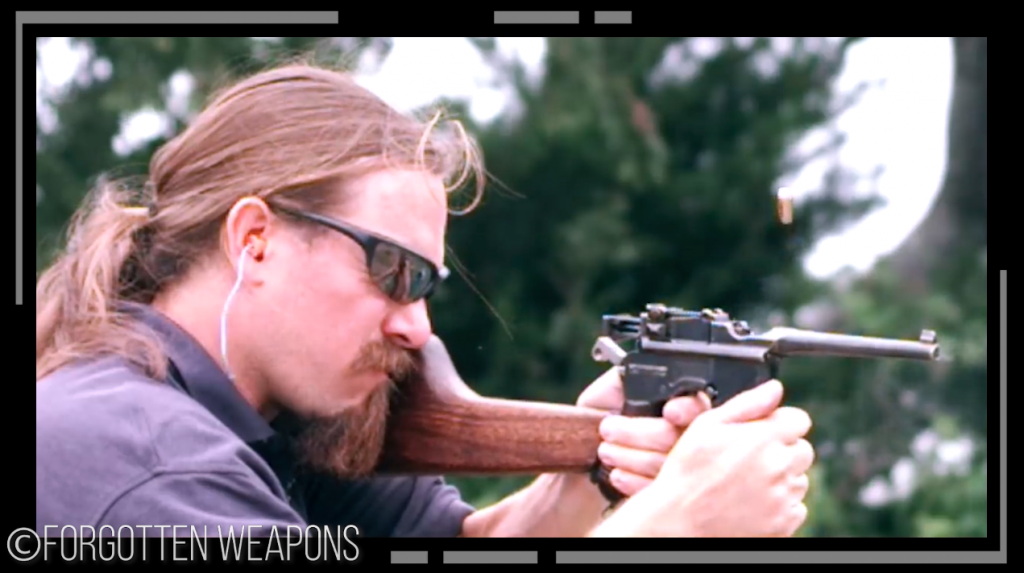
And the Soviets adopted a machine pistol in the APS Stechkin, although the AKS74U eventually replaced it.
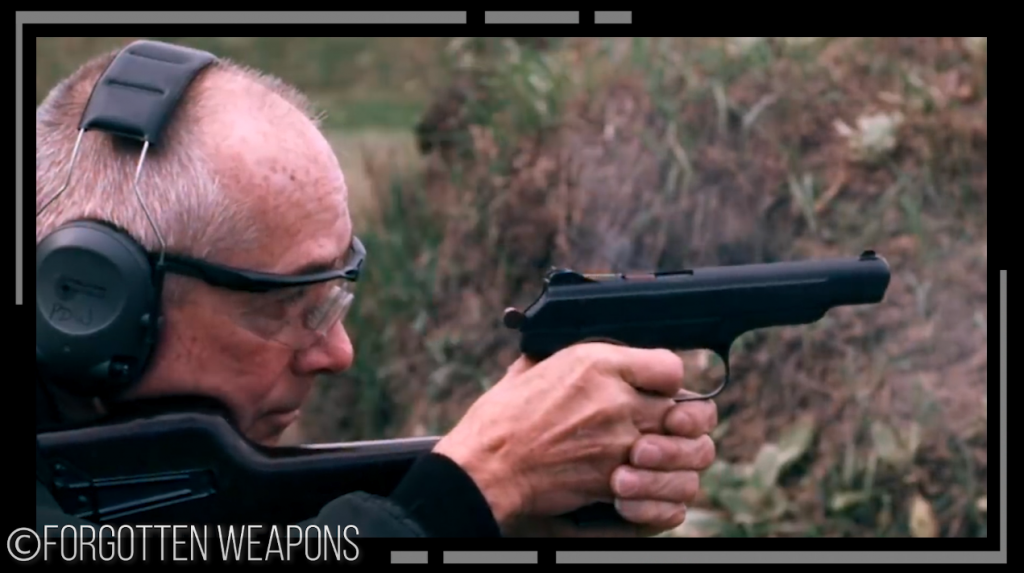
Realistically, most firearms designers experimenting with machine pistols kind of came to the same conclusion…
Outside of relatively specific circumstances, there are just not many scenarios in which a fully automatic handgun will outperform a submachine gun.
Perhaps, above all else, fully automatic capabilities jammed into a package that small tends to be pretty tough to control.
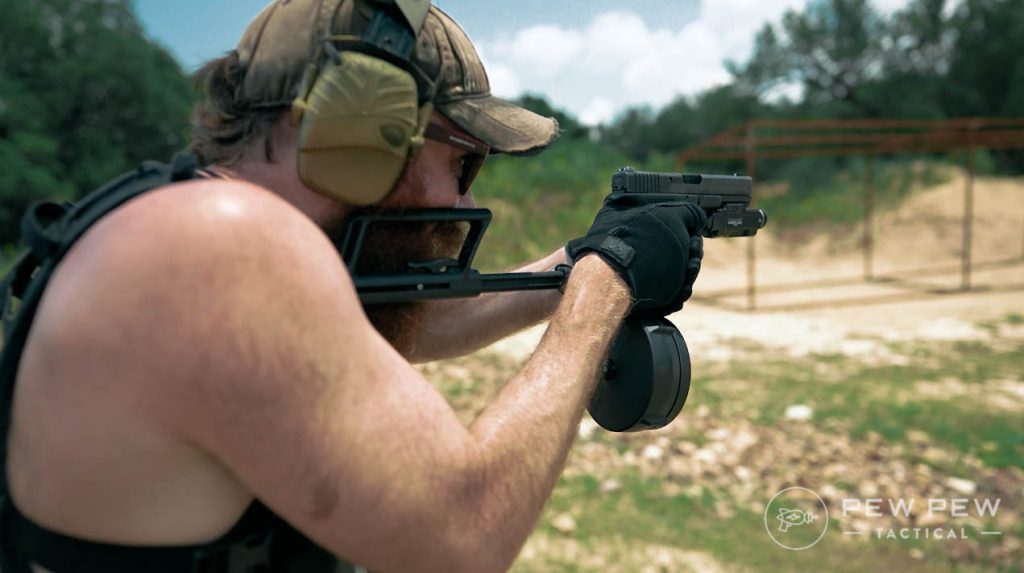
So where exactly does the Glock 18 fit into this?
Glad you asked…we’re going to dive into the history behind the iconic full-auto Glock. We’ll walk through how it came to be, and, even better, we got our hands on one, so we can take it to the range.
If reading isn’t your thing, no worries, check out the full video review below.
As always, head over to Pew Pew Tactical on YouTube for more gun and gear videos.
Table of Contents
Loading…
Every Great Gun Needs an Origin Story
In the mid-1980s, Austrian counterterror unit Einsatz Kommando Kobra specifically requested a fully automatic Glock variant.
They wanted to test the concept of a machine pistol as a PDW.
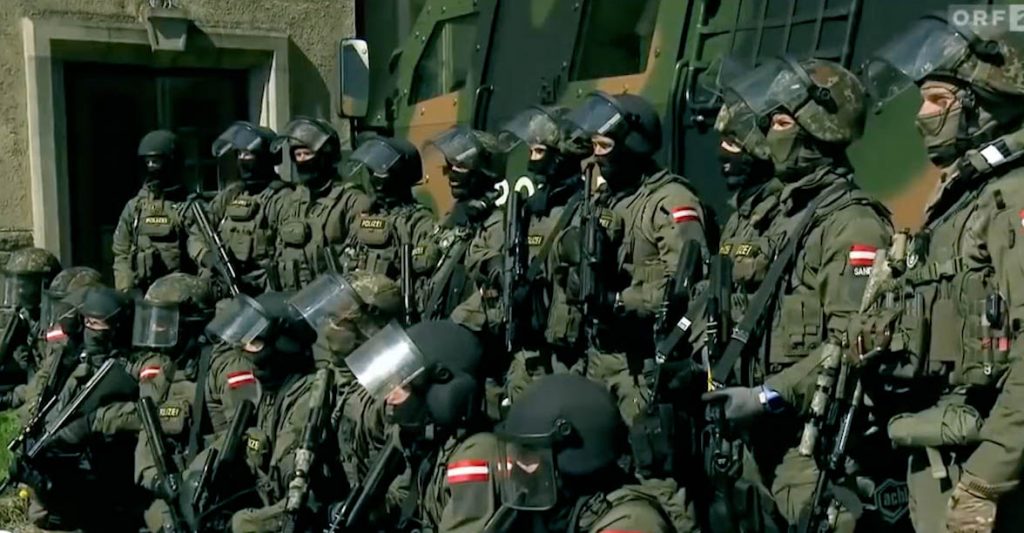
Plus, it probably sounded cool to see how Glock’s new design would stand up to the intense stress that automatic fire creates.
And it’s here that the specific niche of machine pistols arguably makes a bit of sense.
A gun that can deliver an overwhelming amount of firepower in a very small, concealable package might make sense if you’re a mid-80s or 90s counterterror unit or sneaky security detail type.

The fact that the APS Stechkin found favor with various Russian FSB groups long after the AKSU replaced it among normal Russian police and military forces seems to back this up.
The Glock 18 officially made its debut in 1987.
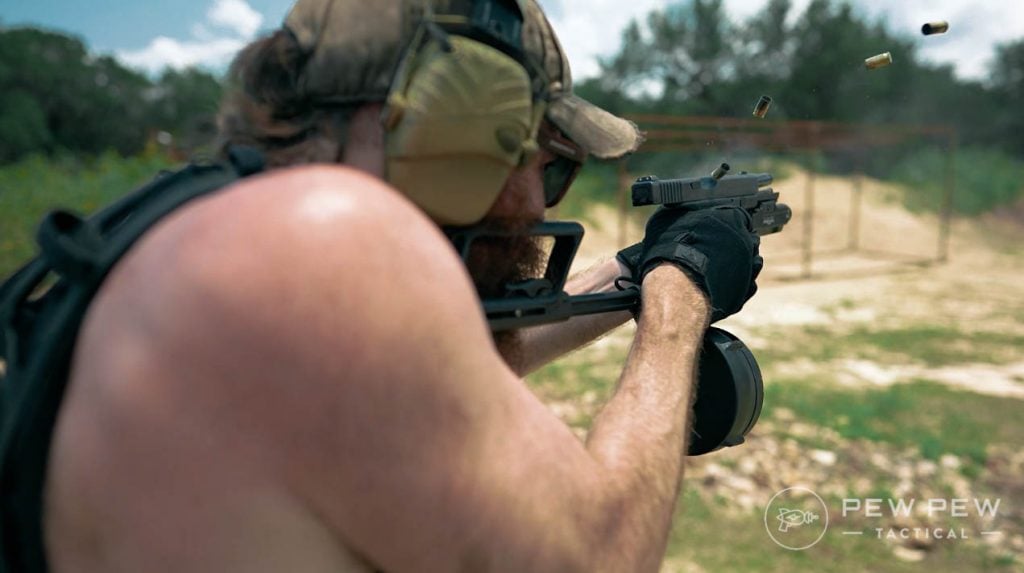
Glock 18 Specs & Features
As I said earlier, the Glock 18 is a whole lot like the Glock 17…just with some extra fun built-in.
But that said, let’s still run through the specs for you numbers nerds.
The 9mm Glock 18 features a 4.49-inch barrel with a total length coming in around 8.03-inches. It weighs roughly 33.16-ounces with a fully loaded mag.
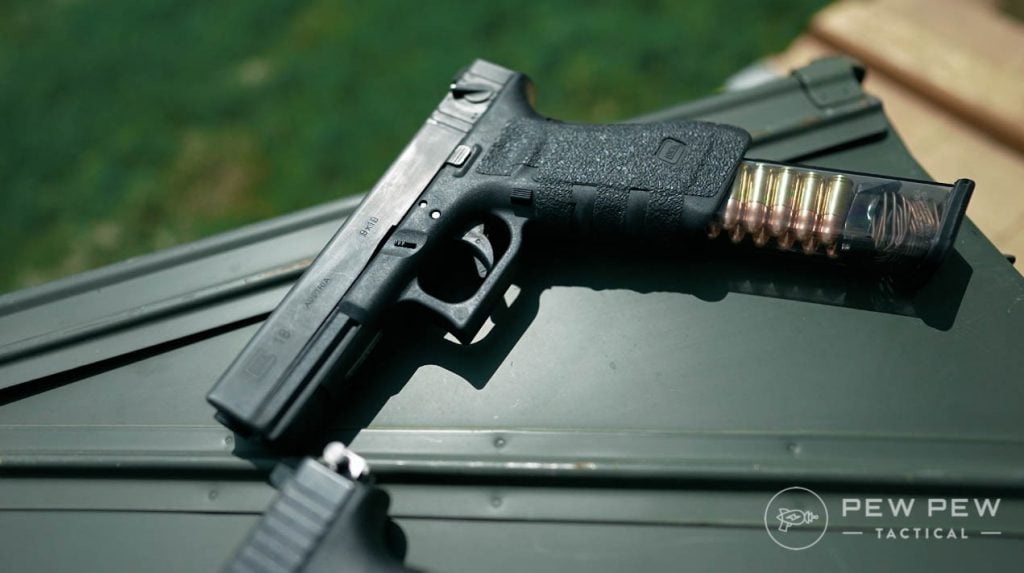
Speaking of mags, it sports a capacity of 19, plus one in the chamber. But it can also rock 17, 24, 31, and 33 round mags, according to Glock.
Width measures about 1.34-inches, with the pistol standing 6.10-inches with the mag inserted.
The Glock 18, like its siblings, looks and feels like a Glock. Uniformity is, after all, Glock’s strong point.
Prices accurate at time of writing
Prices accurate at time of writing
-
25% off all OAKLEY products - OAKLEY25
Copied! Visit Merchant
Perhaps the most obvious visual difference between standard Glocks and the Glock 18 is the fun switch on the left side of the slide.
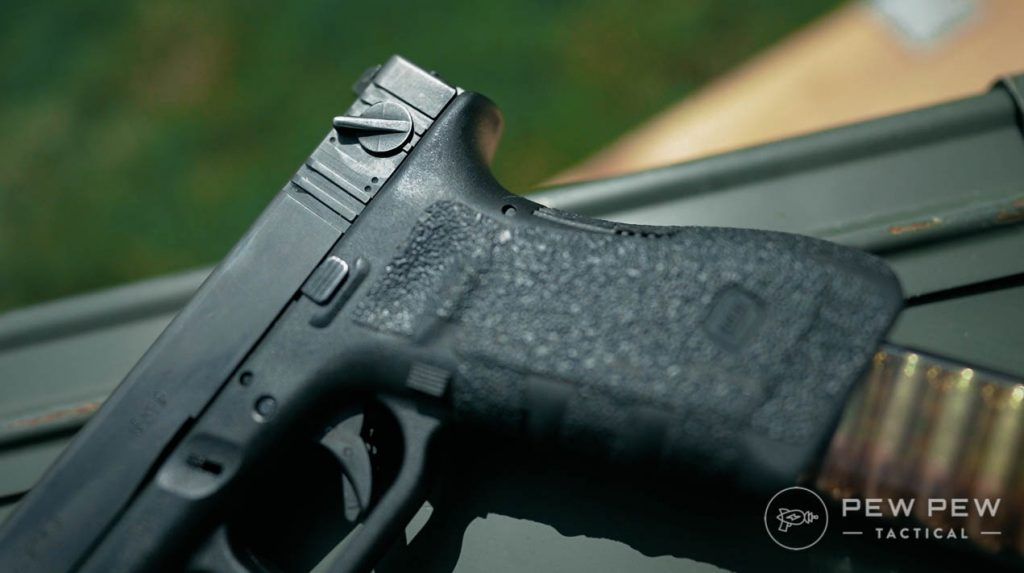
However, it should be noted that the vast majority of internal components are not interchangeable between the Glock 17 and 18.
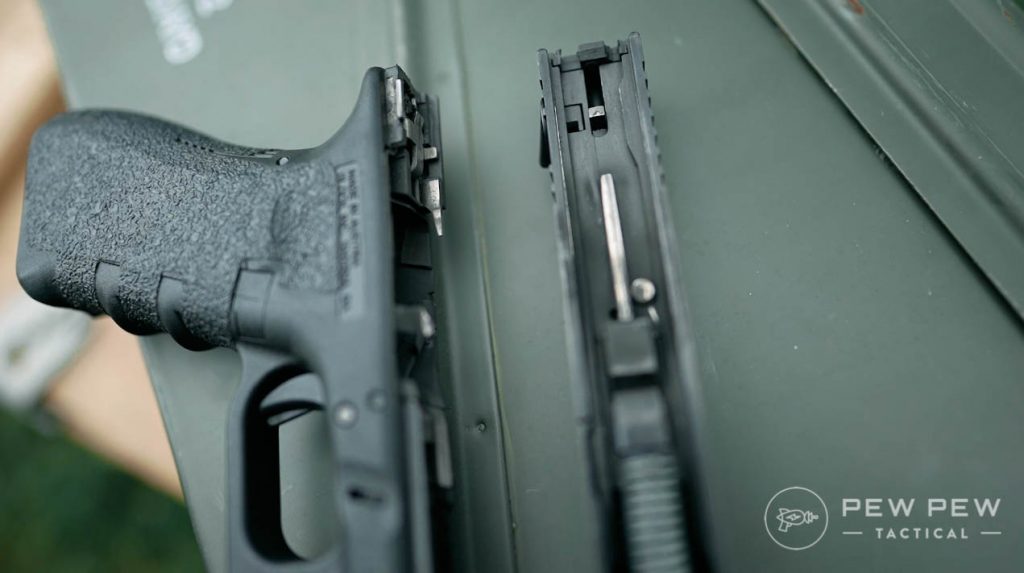
We didn’t get a chance to visually inspect all the minute differences ourselves.
But Small Arms Solutions provides a fantastic video covering the differences with more detail than we’d be able to.
In 1996, Glock released a compensated version called the Glock 18C. This model introduced ports to the gun’s slide.
This was done as an attempt to vent escaping gasses, forcing the muzzle down a bit when firing.
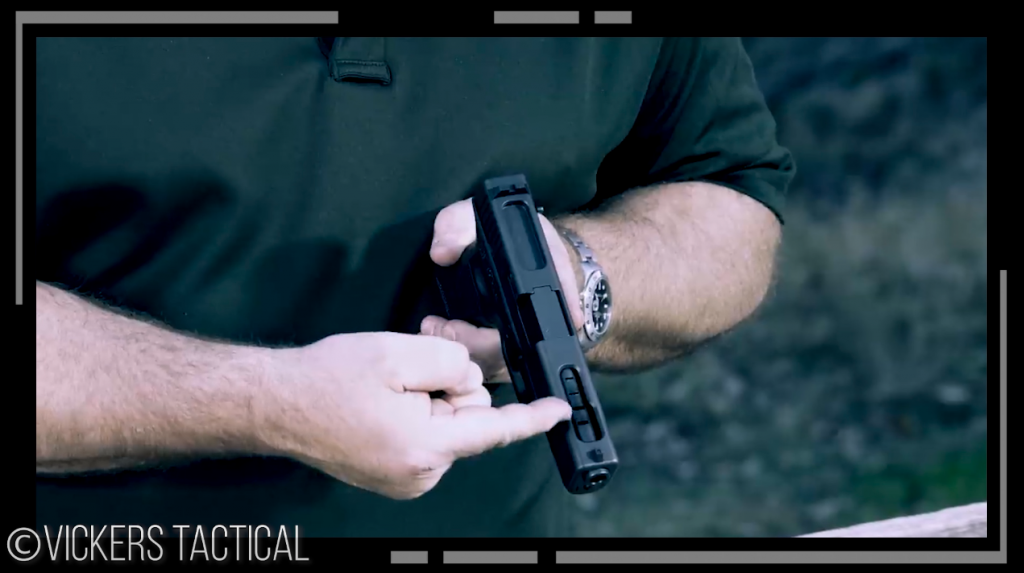
While there were some early experiments with adding a longer barrel with ports for that same effect, this model of G18 didn’t fit in holsters super well.
There are anecdotal reports that the ports snagged on clothing when drawing from a concealed position — not exactly ideal for sneaky types, or anyone for that matter.
Glock themselves estimated that the ported slide of the G18C probably reduced muzzle rise by close to 30%.
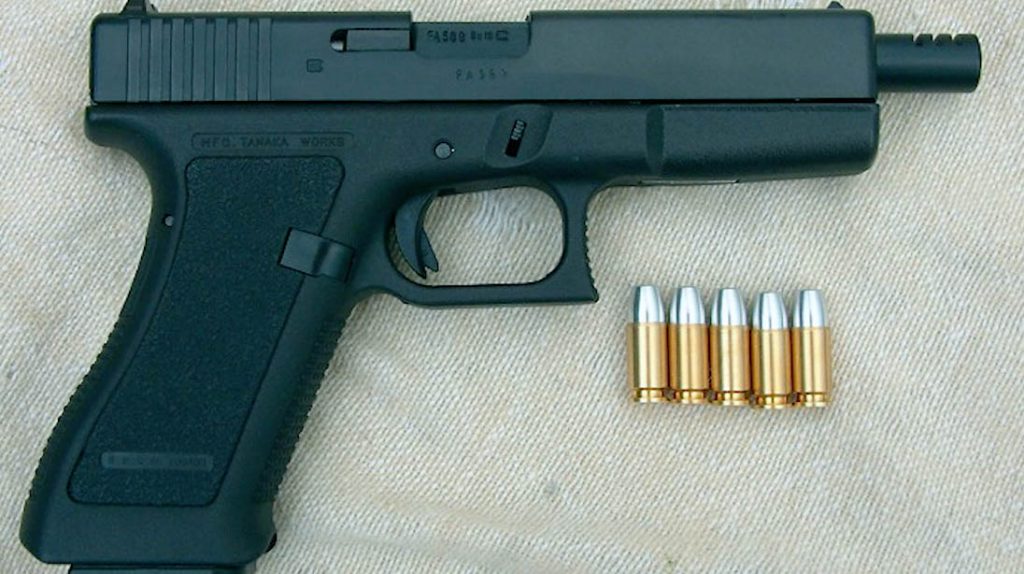
The version we had on hand is one of the original models from the mid-1980s — before the Glock18C.
Now with a little backstory out of the way, let’s get to what you really came here for…the shooting.
Full Auto Madness: Shooting the Glock 18
First off, an enormous thanks to Silencer Central for letting us play around with both the Glock 18 and a legally converted Glock 17 for comparison.
I probably don’t have to tell you that these things are pretty damn rare. The experience was a rush, if only mildly nerve-wracking.
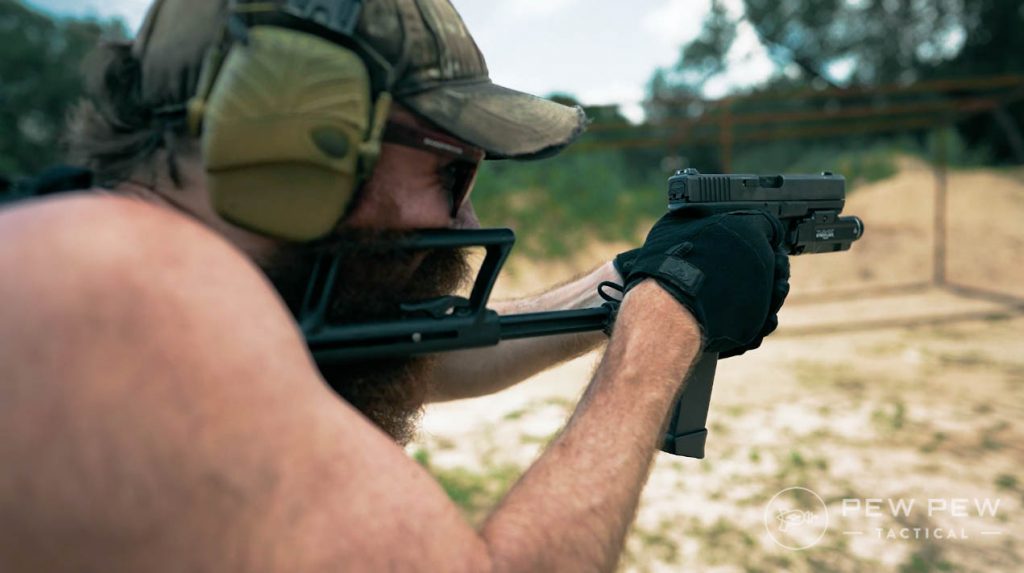
I’d be lying if I said I wasn’t at least a little nervous about letting this thing rip.
Visions of that dude using a vertical grip on a G18 at an indoor range and putting a hole in his hand played in my head.
(Worth noting the video and resulting gunshot wound are the direct result of attaching a vertical grip to the Glock’s polymer railed frame — something it is definitely not designed to support.)
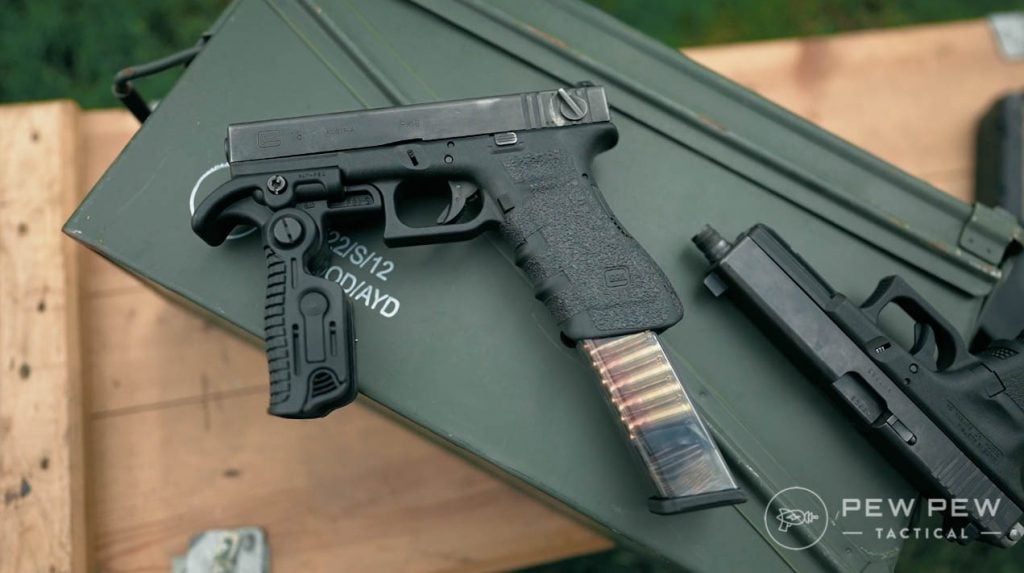
I gradually worked up to mag dumps with the G18 to make sure I wasn’t going to cut my shooting trip short by being that guy.
Even though I have a decent amount of select-fire experience, this indeed would be my first go with a machine pistol. So, I checked the hubris at the door and played it cool.
We also tossed on a FAB Defense GLR stock for added controllability. This device inserts into the gun’s pistol grip just aft of the magwell.
Prices accurate at time of writing
Prices accurate at time of writing
-
25% off all OAKLEY products - OAKLEY25
Copied! Visit Merchant
While the entire setup still felt sketchy overall, it did the job. And I appreciated that third point of contact while trying not to send rounds over the berm.
Learning to Shoot Full-Auto…With a Pistol
Starting with baby steps, I first got the hang of semi-automatic shots – getting a feel for the trigger pull weight.
That’s what you’d expect from a stock Glock at probably ~5.5-pounds or so.
Next, we moved on to small bursts. Here’s where it immediately became apparent if you do anything stupid with your stance.
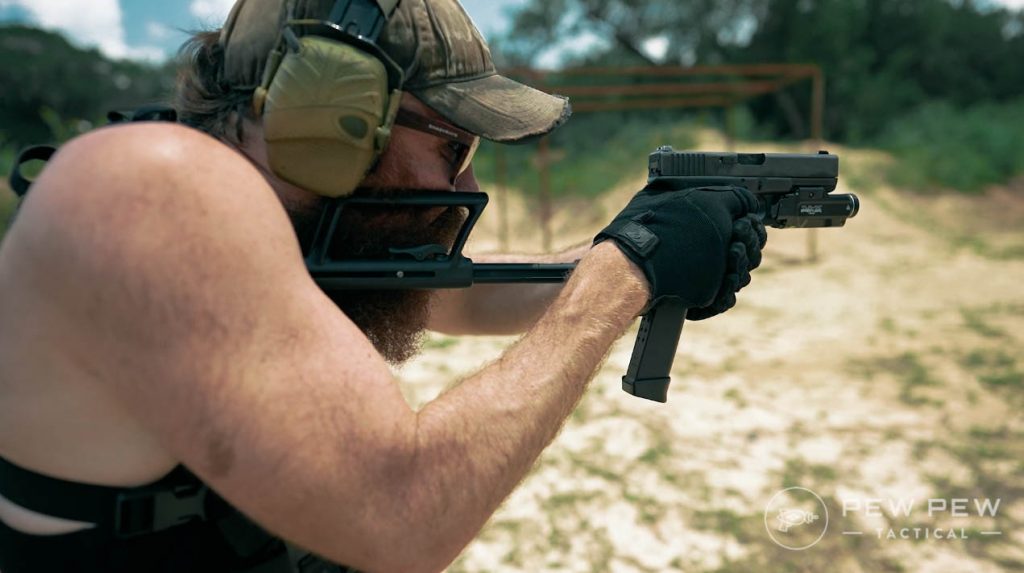
If you’re not mindful about forcing that bad boy down with the fun switch flipped on, those rounds go skyward.
What I found worked best for me was to get into a fighting or athletic stance, keeping those feet firmly planted with good balance.
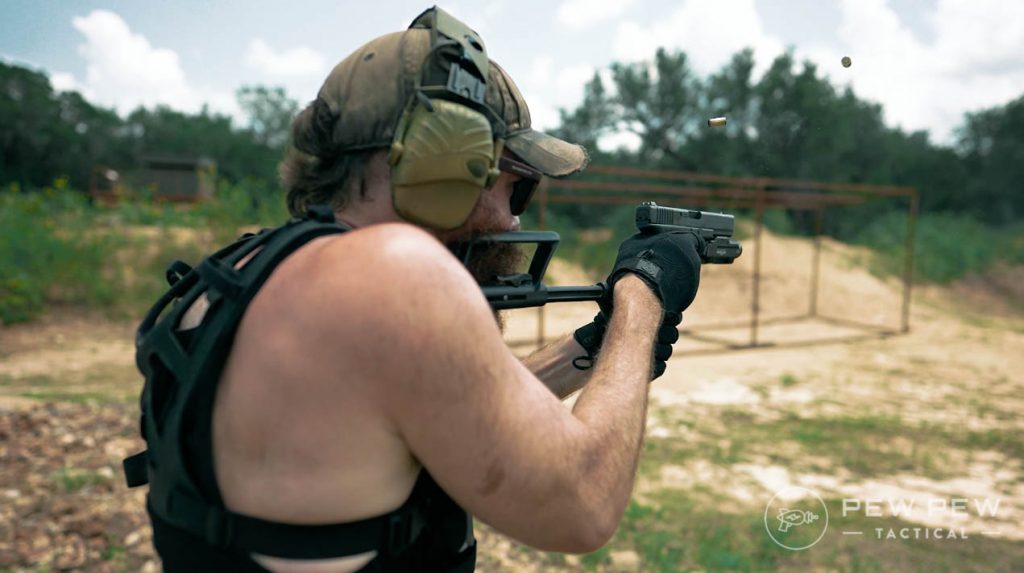
Then I drove the entire gun forward. This pre-emptively counteracted the impending recoil pushing you back while the muzzle rises.
When using extended stick magazines, I slipped my support hand a bit lower than I normally would on something like a standard Glock.
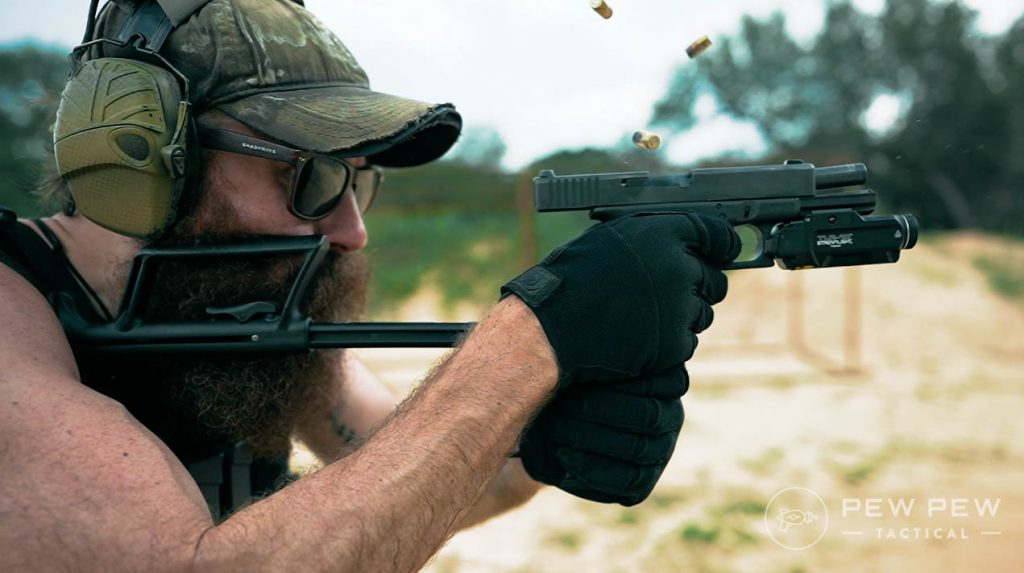
I ditched the thumbs high and forward approach to exert some downward pressure on the magazine by utilizing it, kind of like a lever arm.
After a decent amount of practice and working up to full-auto mag dumps, it felt kind of natural. See video!
By the end of the day, I felt pretty confident dumping 50 rounds of 9mm into an area about the size of a smart car from maybe 25-yards away or so.
Realistically, that’s probably what you can expect from something in the machine pistol family. I’m happy with that.
Far more experienced shooters probably run the gun to much greater effect than I can.
But the primary purpose of something like the Glock 18 is to produce an overwhelming amount of rounds in the air at probably pretty close range at a moment’s notice.
(Or as one of my friends put it, “That looks like a really expensive way to yell at someone.”)

FAB Defense Stock & Mags: Did They Work?
I will say, the FAB Defense stock, while sufficient for what we sought to do that day, felt just a bit sketchy. You can feel this thing flex under the strain of continuous full-auto fire.
I think I’d probably prefer a stock that’s just a little more robust. That said, we had no real issues with it outside of some mild apprehension.
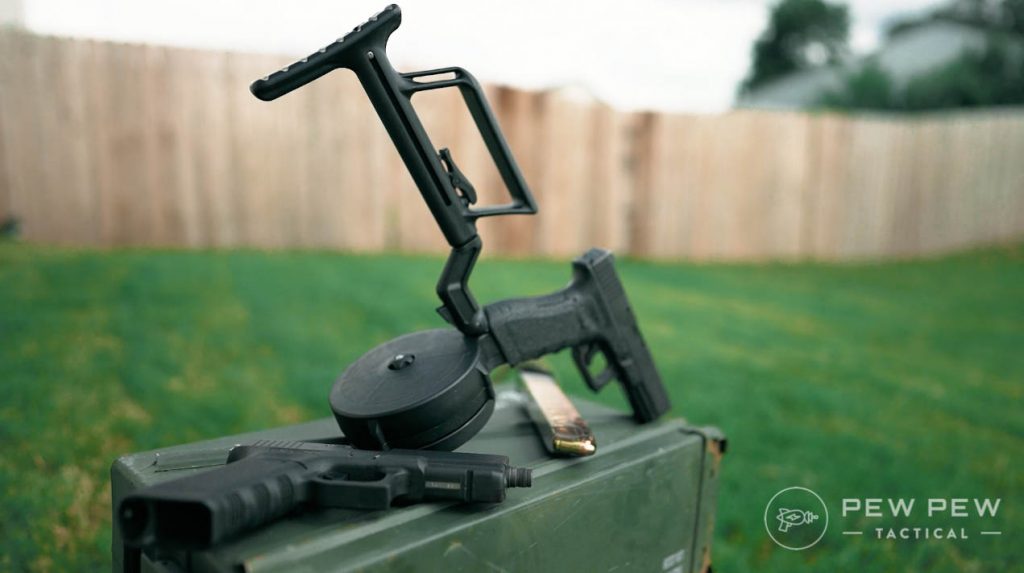
We ran a pretty big array of both big stick magazines and even a mildly temperamental drum. After a few hiccups, the drum ran great in both the Glock 17 and Glock 18.
Truth be told, we originally planned on comparing and contrasting the Glock 18 and legally converted full-auto Glock 17.
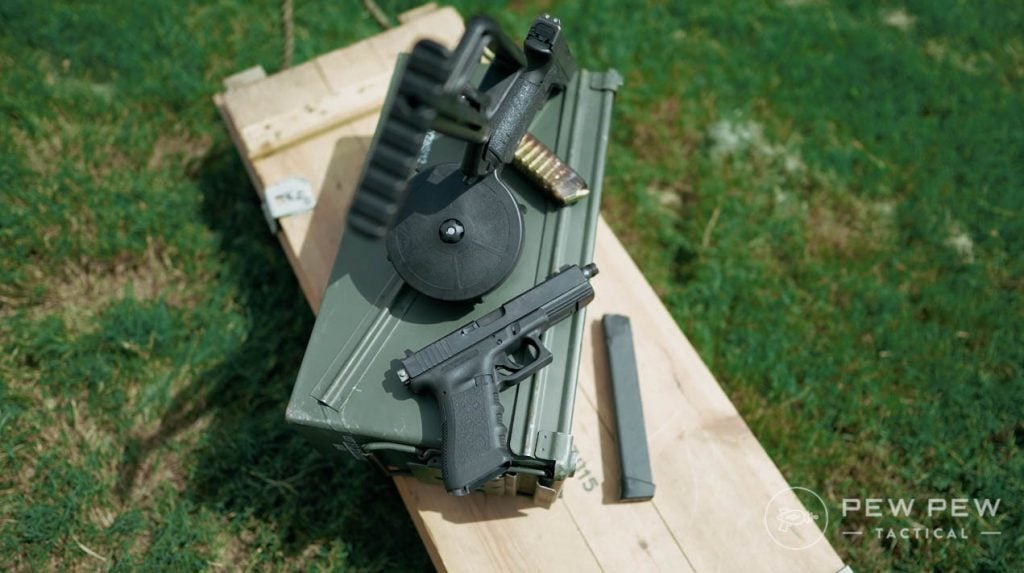
But the differences between the two are negligible — both in feel, rate of fire, and anything else you can think of.
Speaking of which, both these angry Austrians throw lead in the air to the tune of about 1,100 to 1,200 rounds per minute.
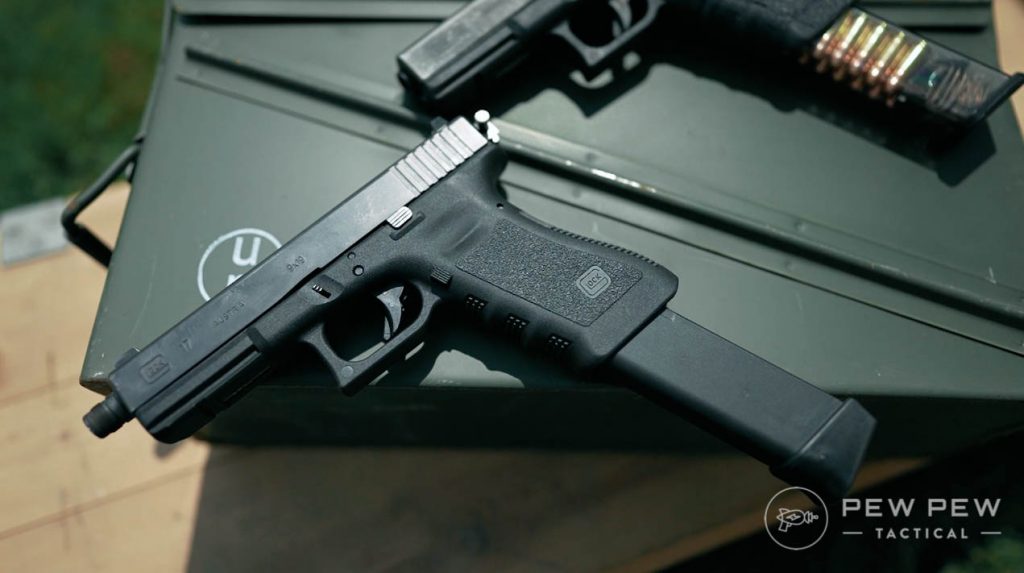
If you need a comparison, keep in mind that the venerable MG 42 clocks in at around 1,500 RPM.
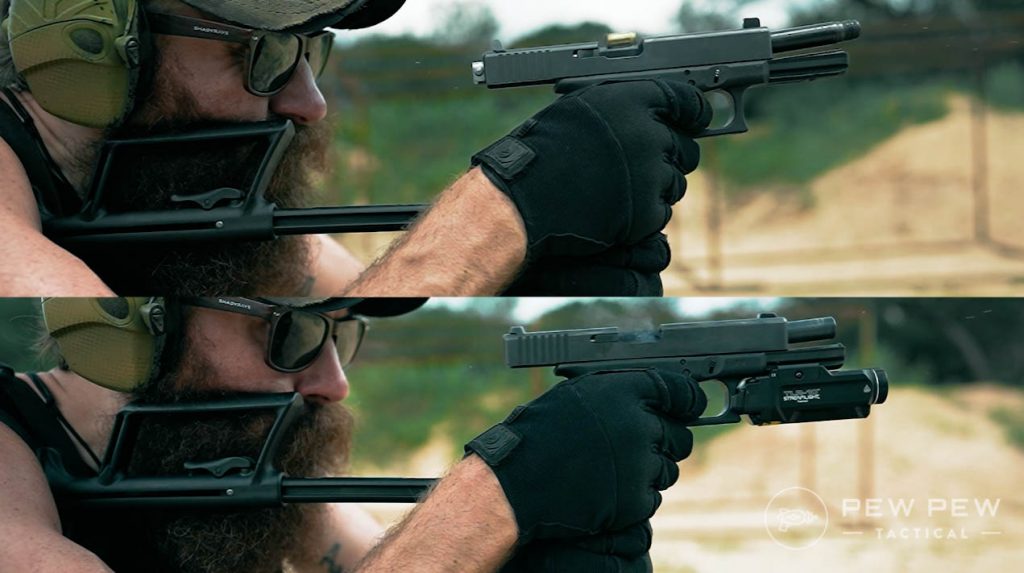
By the Numbers
Reliability: 4.5/5
We had some initial hiccups with the drum mag, but that eventually sorted itself out.
Ergonomics: 4.5/5
It’s a Glock and feels like a Glock.
Accuracy: 4.5/5
So this bad boy isn’t meant for dead-on accuracy. Let’s be real, it’s there to reign some fire down on the target. BUT, it does shoot where you point it.
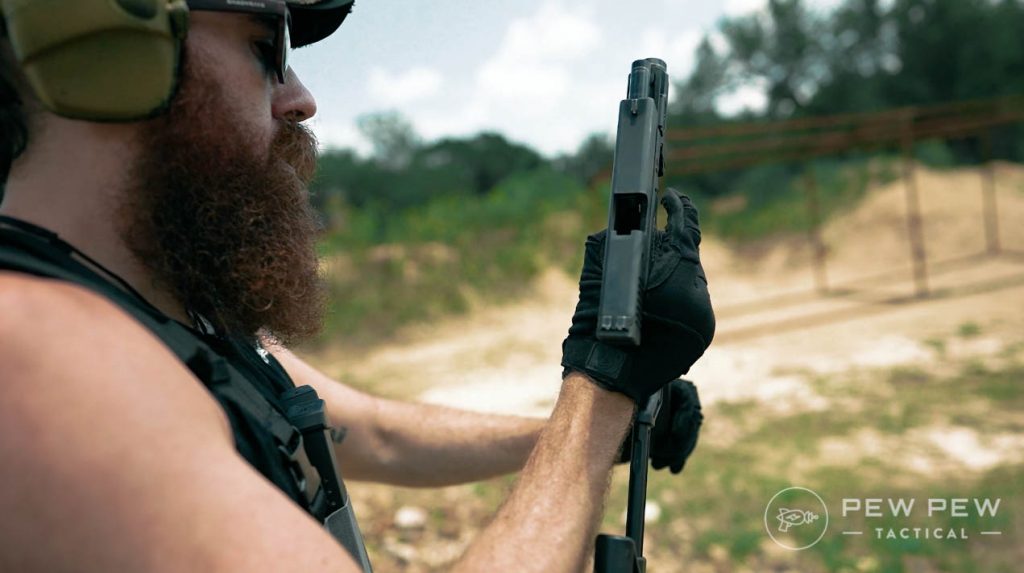
Customization: 4.5/5
Again, it’s a Glock so theoretically, you can add some stuff to it as you wish. But honestly it’s pretty cool as is.
Value: 1/5
Hahahahahahaha. Us peasants (a.k.a. regular people) will never own one of these but it sure is fun to shoot if you get the chance.
Giggle Factor/Overall: 5/5
It’s a full-auto Glock. Need I say more?
Conclusion
Machine pistols have mostly fallen by the wayside in a world full of ultra-compact PDWs offering more firepower with little bulk.
But it is fascinating to experience their overwhelming rate of fire firsthand.
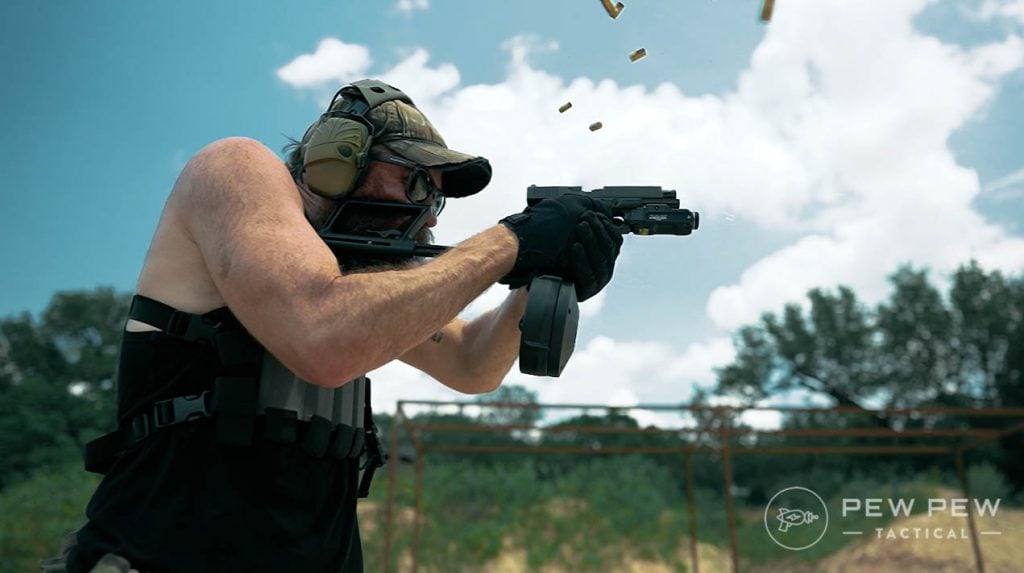
Obviously, this isn’t a review since the Glock 18 is essentially unobtanium. So, consider this just a small bit of entertaining content detailing my experiences with it. If you’re extra special you might quality…so also check out our How to Get a Glock 18.
Again, you can check out the full video review below to see the Glock 18 in action.
What do you think of the Glock 18? Let us know in the comments below. Want a Glock you can actually own? Check out our list of the Best Glocks: Across Calibers & Sizes.

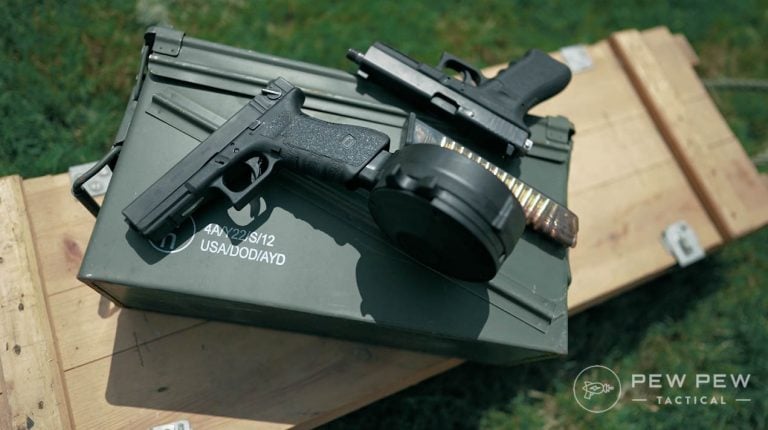

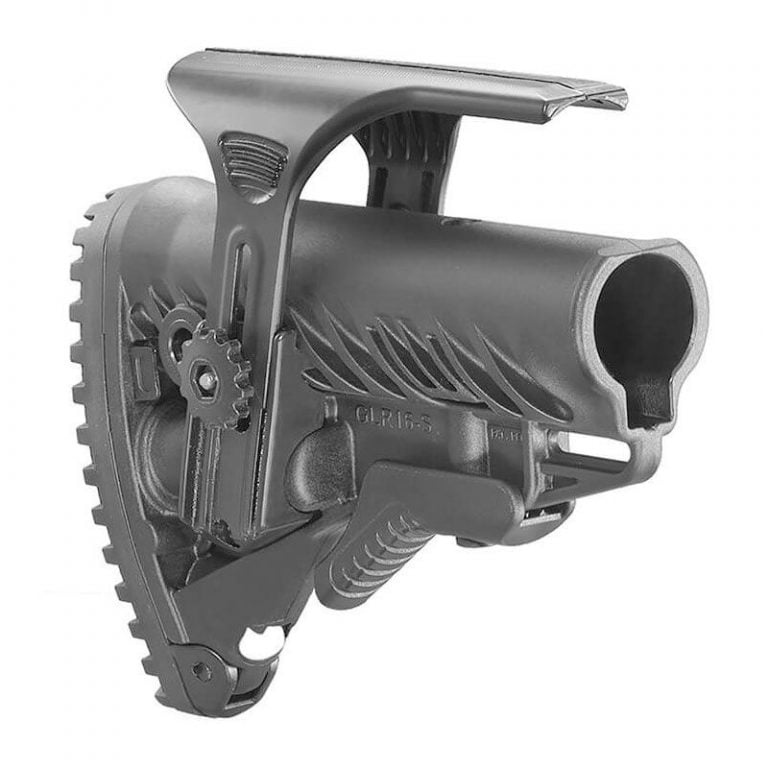







5 Leave a Reply
I shot a Glock 18 some years ago. It’s not a fun gun to shoot (like an MP-5) but it’s cool to have tried it out. At the time, I commented that it would only be useful to commit murder in a phone booth. One is as rare as the other nowadays.
Fun article. A selective fire handgun is about as impractical as you can get, as witnessed by their lack of use by professional units, but probably fun to waste a lot of ammo through. A friend and I used to go jack rabbit hunting with a full auto Uzi, which was also fun but not very practical. I have to say it's funny that two of the previous three comments to mine are outrage at the 1911 comment not about the G18. :-)
"The U.S. experimented with a fully automatic 1911 with 30-round magazines — hilarious for a platform that routinely struggles to get through 7-round mags without jamming."
Do you want flamed? Because that's how you get flamed?
I made a short video about G18 after few holster drills (no url allowed). Carried few times appendix, played around on IPSC stage. Select fire lever is very easy to be accidentally dropped down ;-)
Just my 2 cents and cheers from Poland
Barely get through a 7rd mag without jamming? That is completely irresponsible writing at worse and biased at best. Now I'm no glock fan but I will admit what they do well. You could at least do the same as a "writer" of gun reviews. SMH